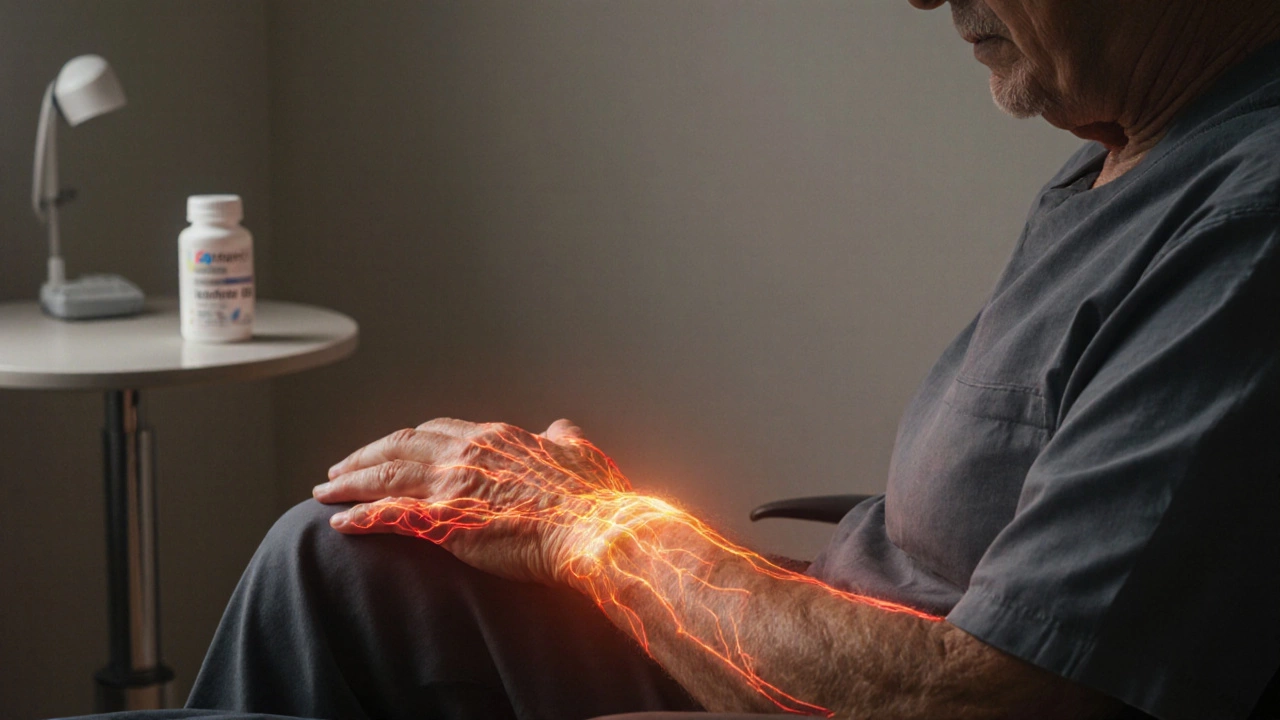Spinal Cord Stimulation: How It Works and Who Benefits
When working with spinal cord stimulation, a therapeutic method that sends low‑level electrical signals to the spinal cord to modulate pain signals. Also known as SCS, it has become a go‑to option for people whose pain hasn’t responded to medication or physical therapy.
One of the core concepts behind SCS is neuromodulation, the process of altering nerve activity through targeted stimulation. Neuromodulation is the engine that powers the whole system, influencing how the brain perceives chronic pain. The hardware that delivers this modulation is an implantable pulse generator, a small, battery‑powered device placed under the skin that creates the electrical impulses. Proper lead placement, the positioning of thin wires next to the spinal cord to target specific pain pathways determines how effectively the pulses interrupt pain signals. Together these components address chronic pain, persistent discomfort lasting longer than three months, often resistant to conventional treatments and can dramatically improve quality of life.
Key components and considerations
The therapy starts with a trial period where temporary leads are placed and the patient’s response is measured. If the reduction in pain reaches a clinically meaningful level—typically 30‑50%—the permanent system is implanted. The spinal cord stimulation system then requires regular follow‑ups to check battery life, adjust programming, and ensure the leads remain correctly positioned. Modern pulse generators feature rechargeable batteries that can last several years, reducing the need for replacement surgeries. Advancements in imaging and programming software now allow clinicians to fine‑tune stimulation patterns for different pain regions, making the treatment more personalized.
Patients who qualify usually suffer from conditions such as failed back surgery syndrome, complex regional pain syndrome, or severe peripheral neuropathy. Age isn’t a strict barrier, but overall health, especially heart or infection risk, plays a role in decision‑making. The interdisciplinary approach—combining a pain specialist, surgeon, and physiotherapist—helps identify who will benefit most and designs a post‑implant rehab plan that maximizes functional recovery.
Real‑world data shows that SCS can lower opioid consumption, improve sleep quality, and increase activity levels. While the upfront cost can be higher than medication alone, many health systems recognize long‑term savings from reduced hospital visits and fewer invasive procedures. Ongoing studies continue to explore newer waveforms, such as burst and high‑frequency stimulation, which aim to broaden the reach of neuromodulation without causing uncomfortable sensations.
Below you’ll find a curated collection of articles that dive deeper into each of these topics—clinical guidelines, patient stories, technology updates, and practical tips for navigating the treatment pathway. Whether you’re a potential patient, a caregiver, or a healthcare professional, the resources ahead will give you a clear picture of what spinal cord stimulation can do and how to make the most of it.

Top Pain Relievers for Nerve Pain: What Works Best?
Discover the most potent treatments for nerve pain, from gabapentin and pregabalin to spinal cord stimulation, and learn how to combine them for maximum relief.
Categories: Chronic Pain Treatment
0
